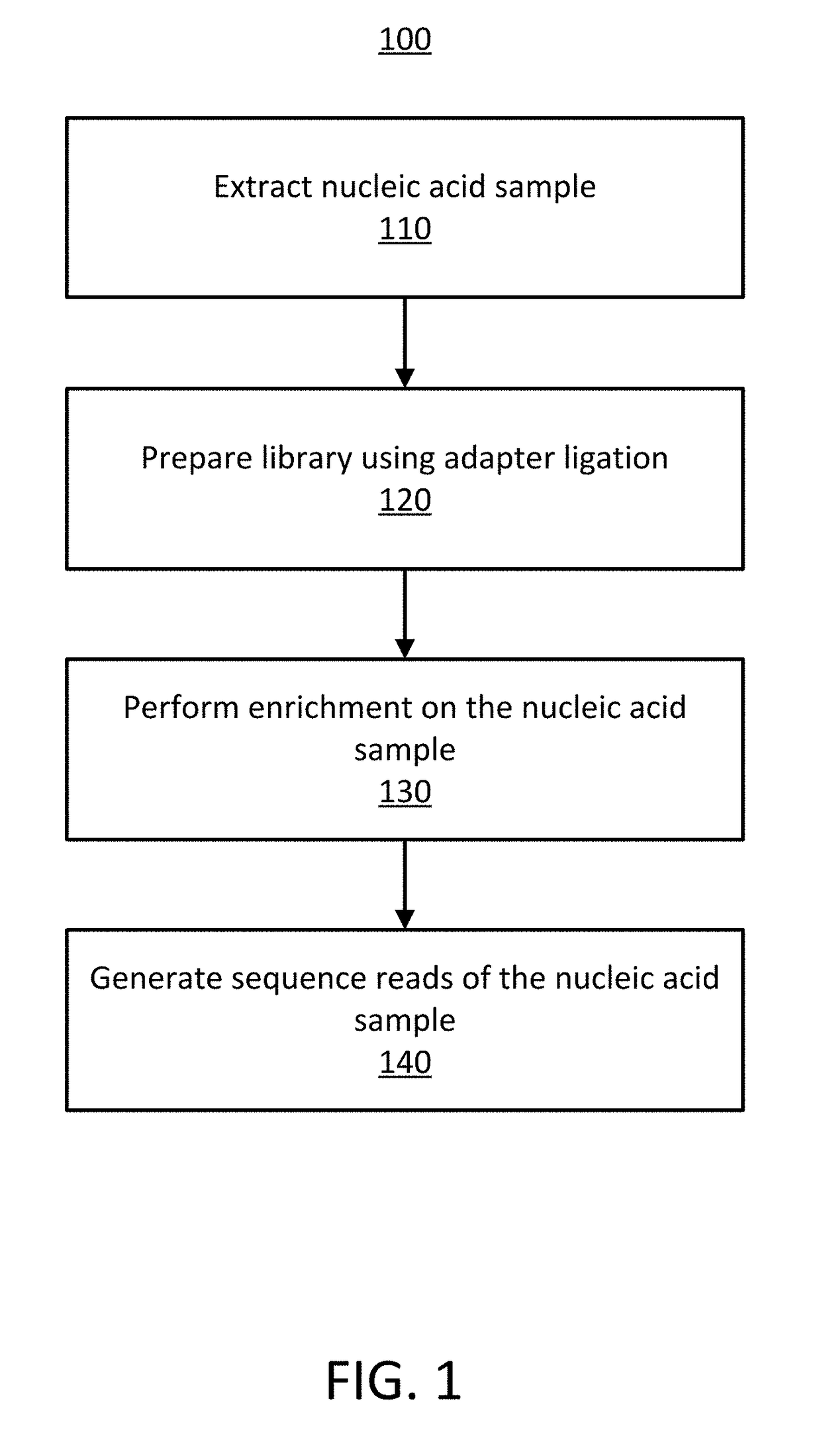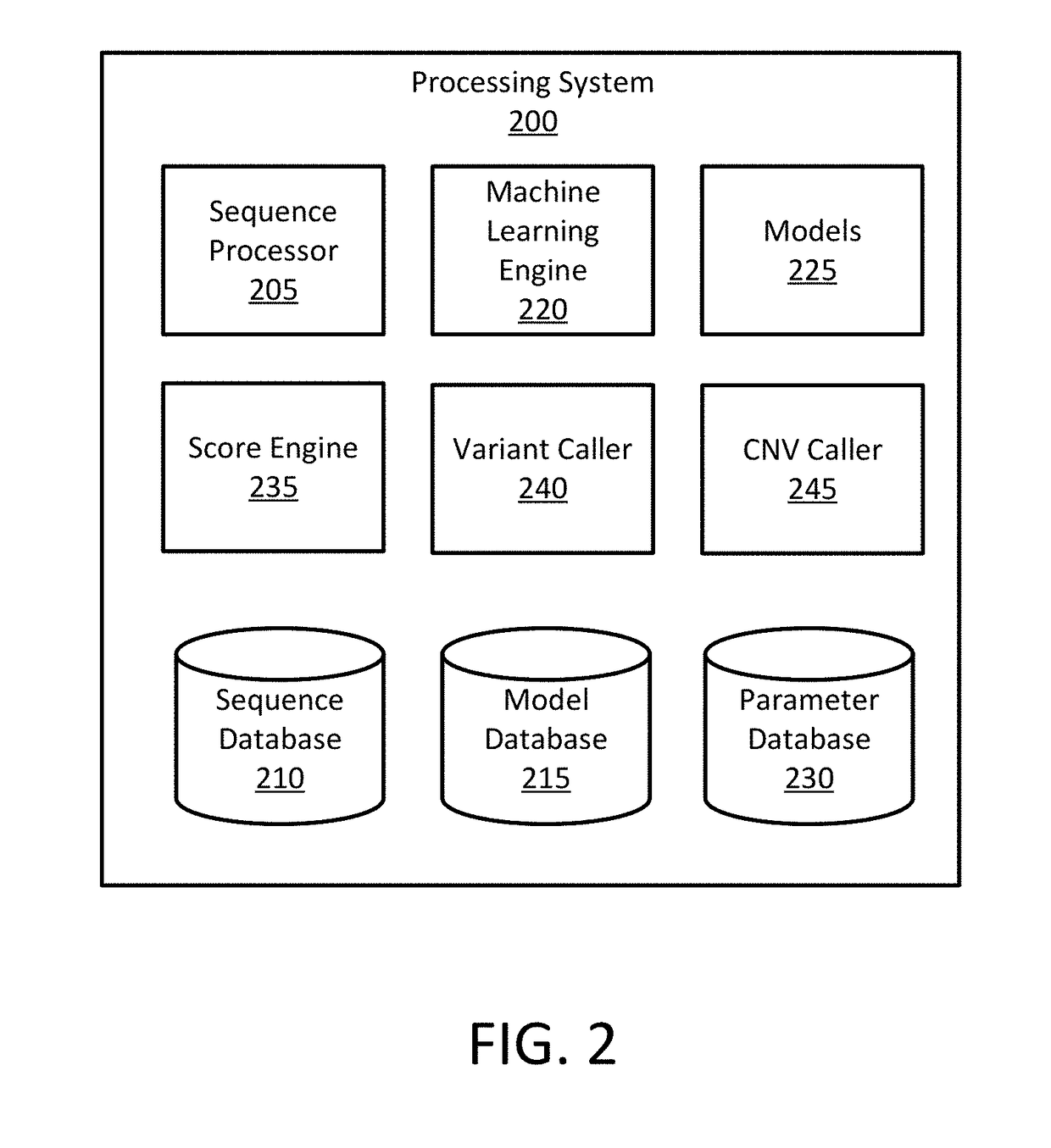Detecting Cross-Contamination in Sequencing Data Using Regression Techniques
a regression technique and sequencing data technology, applied in the field of detecting contamination in samples, can solve problems such as false positive calls, compromised specificity, and existing methods that are not designed for detection of contamination in sequencing data from cancer detection samples
- Summary
- Abstract
- Description
- Claims
- Application Information
AI Technical Summary
Benefits of technology
Problems solved by technology
Method used
Image
Examples
Embodiment Construction
I. Definitions
[0037]The term “individual” refers to a human individual. The term “healthy individual” refers to an individual presumed to not have cancer or disease. The term “subject” refers to an individual who is known to have, or potentially has, cancer or disease.
[0038]The term “sequence reads” refers to nucleotide sequences read from a sample obtained from an individual. Sequence reads can be obtained through various methods known in the art.
[0039]The term “read segment” or “read” refers to any nucleotide sequences including sequence reads obtained from an individual and / or nucleotide sequences derived from the initial sequence read from a sample obtained from an individual. For example, a read segment can refer to an aligned sequence read, a collapsed sequence read, or a stitched read. Furthermore, a read segment can refer to an individual nucleotide base, such as a single nucleotide variant.
[0040]The term “single nucleotide variant” or “SNV” refers to a substitution of one n...
PUM
| Property | Measurement | Unit |
|---|---|---|
| minor allele frequency | aaaaa | aaaaa |
| noise model | aaaaa | aaaaa |
| variant allele frequency | aaaaa | aaaaa |
Abstract
Description
Claims
Application Information
 Login to View More
Login to View More - R&D
- Intellectual Property
- Life Sciences
- Materials
- Tech Scout
- Unparalleled Data Quality
- Higher Quality Content
- 60% Fewer Hallucinations
Browse by: Latest US Patents, China's latest patents, Technical Efficacy Thesaurus, Application Domain, Technology Topic, Popular Technical Reports.
© 2025 PatSnap. All rights reserved.Legal|Privacy policy|Modern Slavery Act Transparency Statement|Sitemap|About US| Contact US: help@patsnap.com



